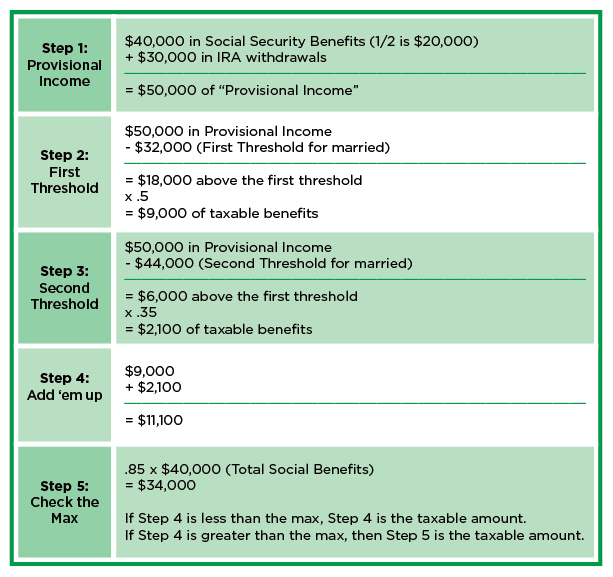Are you able to explain to this growing clientele how their benefits are taxed? Our calculator helps.
The proportion of beneficiaries who must pay income tax on their Social Security benefits has risen over time and will continue to grow. With more people impacted by these taxes, it’s important that you’re able to explain how their benefits are taxed.
The calculation is complicated, but the taxable benefit calculator below makes it simple for you to show clients how much of their benefit is taxable. Note that not everyone pays taxes on benefits. Social Security benefits weren’t subject to federal taxes originally. But after a funding crisis, the federal government in 1984 started taxing some higher-income beneficiaries. Clients who have other income in retirement other than Social Security likely will pay taxes on their benefit. If they earn more than a certain amount from those other sources while also collecting Social Security, you have to add a certain amount of their benefit payment to their taxable income on their tax return.
Several variables determine the amount of taxable Social Security benefits, but as much as 85% of a client’s benefit may be taxable.
Step 1: Provisional Income – Your “provisional income” includes half of your Social Security benefits, plus all other taxable income, such as dividends, realized interest, and realized capital gains. This also includes non-taxable interest earnings, like those from municipal bonds.
Step 2: First Threshold – Subtract the first threshold and multiply by .5
Step 3: Second Threshold – Subtract the second threshold and multiply by .35
Step 4: Add the Answers
Step 5: Check the Max – Calculate and apply the maximum
Assumptions: In the example a married couple is joint filing. The client has $50,000 of total income and none of it is “tax free” (like Roth withdrawals or return of principal).
At first glance, most advisors would assume 85% of the client’s benefits would be taxable. The exercise here, however, shows that only 27.27% of the client’s Social Security benefits will be taxable as ordinary income. The IRA withdrawals by themselves surpass the second threshold.
In short, Social Security carries a substantial tax advantage over other forms of income, so delaying benefits in order to build a larger Social Security benefit has a greater positive tax impact than most people realize.
On average 56% of beneficiaries will owe federal income tax on their benefits according to the Social Security Administration. That proportion will grow over time because the income thresholds used to determine the share of benefits that is taxable are not indexed for inflation or wage growth.
Explaining how Social Security benefits are taxed is no easy task. You may not need to explain the details of the calculation, but being able to show them how much of their benefit is taxable can help them see the value of an advisor who understands the intricacies of Social Security.








